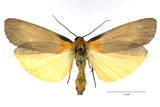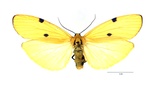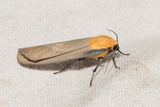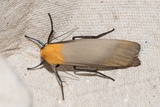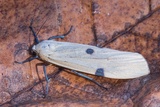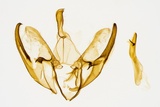Lithosia quadra (Linnaeus, 1758) Species
Last modified: Sept. 4, 2025, 7:13 p.m.
A very rare species in Belgium, mostly known from the southern provinces. Used to be known from some localities in the north, but on 13 September 2006, there was a great influx of this species all over the country. It was observed again in BR (formerly only known from literature) and in AN. (last observation was in 1951!) and the species was new for the provinces of LI and WV.
A species that sometimes can occur in great numbers with migratory movements.
Nowadays (2018) a not-so-common species in the whole country with most observations still in the south where it can be locally common.
This species is considered Least Concern according to the IUCN Red List category for Flanders 2023.
Details
- Classification
- Family: Erebidae > Subfamily: Arctiinae > Tribus: Lithosiini > Genus: Lithosia > Species: Lithosia quadra
- Vernacular names
- Viervlakvlinder (NL), Four-spotted Footman (EN), La Lithosie quadrille (FR), Vierpunkt-Flechtenbärchen (DE)
- First mention in Belgium
- De Sélys-Longchamps E. 1837. Catalogue des Lépidoptères ou Papillons de la Belgique, précédé du tableau des Libellulines de ce pays. — — : 1–29. On page 28 (as Lithosia Quadra). view page
- Status
-
Native
Distribution
Bionomics
Hibernates as a small larva and pupates in a loose cocoon in a crevice. The adults come to light and sugar.
Flight periods
The adults fly from mid-June till late September in one generation a year, or possibly with a partial second generation sometimes till early November.
Observed on
- Host plant (species):
- Peltigera canina
- Substrates:
- Lichens
The larva lives on lichens growing on the bark of different deciduous trees but with a preference for those growing on Quercus.
